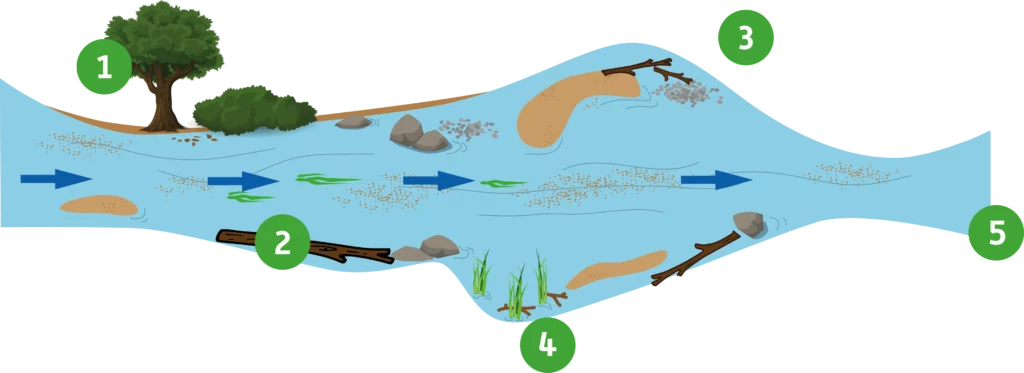Fascinating biodiversity in a comparatively small area
The quartzite rock of the Hunsrück carries the percolating rainwater through its fissures until it reaches the surface again, e.g. via seepage springs in slope areas. There, different types of wetlands generate, which can develop into streams if there is a strong, continuous flow of water.
Streams – here the Steinaubach – are diverse and dynamic habitats with adapted species communities. Particularly characteristic of such streams is the regular succession of fast-flowing currents and zones with calmer currents. Each zone is characterised by very specific animal and plant species.
Floodplains are natural flooding areas of rivers as well as streams and thus also important water retention areas. Pools generating in the floodplains are also important breeding and development sites as well as food sources for numerous insects, amphibians and birds.

Watercourses
- with their floodplains link different habitats as „lifelines of nature“ and are therefore important for the migration and spread of species.
- enable enormous species richness due to the diversity of the habitat, which is characterised by different currents, water depths, grain sizes of sediments, shading, dead wood, etc.
- cool adjacent habitats in summer through evaporation.